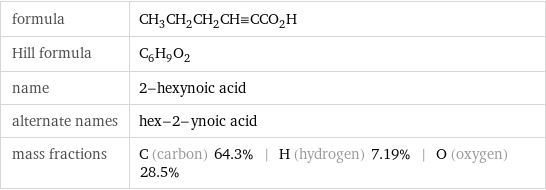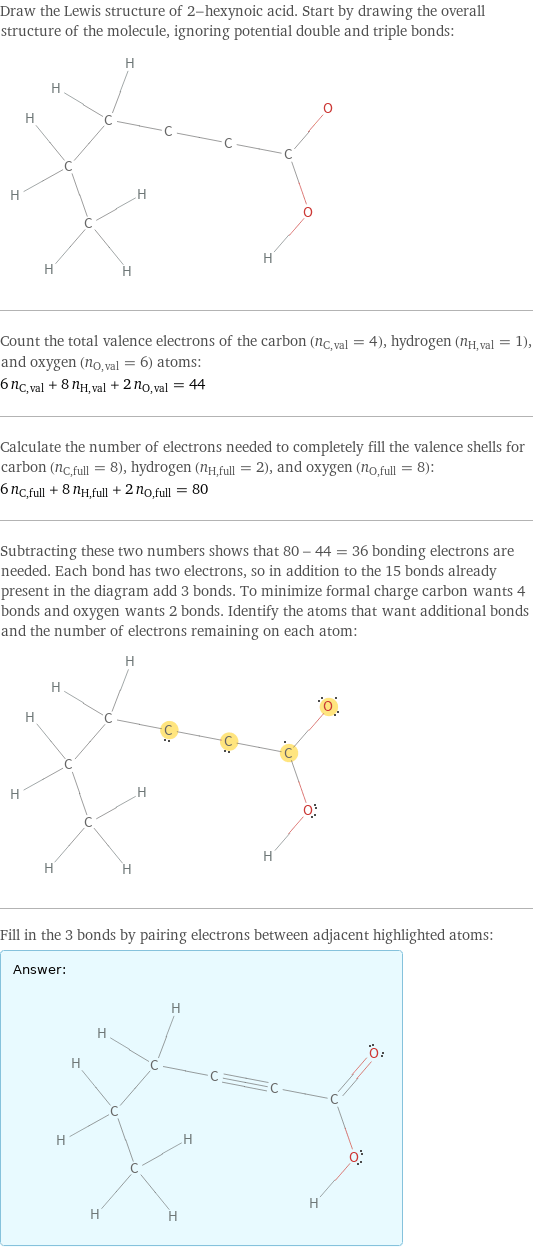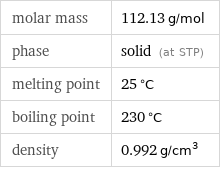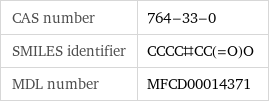Input interpretation

2-hexynoic acid
Chemical names and formulas

formula | CH_3CH_2CH_2CH congruent CCO_2H Hill formula | C_6H_9O_2 name | 2-hexynoic acid alternate names | hex-2-ynoic acid mass fractions | C (carbon) 64.3% | H (hydrogen) 7.19% | O (oxygen) 28.5%
Lewis structure

Draw the Lewis structure of 2-hexynoic acid. Start by drawing the overall structure of the molecule, ignoring potential double and triple bonds: Count the total valence electrons of the carbon (n_C, val = 4), hydrogen (n_H, val = 1), and oxygen (n_O, val = 6) atoms: 6 n_C, val + 8 n_H, val + 2 n_O, val = 44 Calculate the number of electrons needed to completely fill the valence shells for carbon (n_C, full = 8), hydrogen (n_H, full = 2), and oxygen (n_O, full = 8): 6 n_C, full + 8 n_H, full + 2 n_O, full = 80 Subtracting these two numbers shows that 80 - 44 = 36 bonding electrons are needed. Each bond has two electrons, so in addition to the 15 bonds already present in the diagram add 3 bonds. To minimize formal charge carbon wants 4 bonds and oxygen wants 2 bonds. Identify the atoms that want additional bonds and the number of electrons remaining on each atom: Fill in the 3 bonds by pairing electrons between adjacent highlighted atoms: Answer: | |
Basic properties

molar mass | 112.13 g/mol phase | solid (at STP) melting point | 25 °C boiling point | 230 °C density | 0.992 g/cm^3
Units

Solid properties (at STP)

density | 0.992 g/cm^3 refractive index | 1.46
Units

Chemical identifiers

CAS number | 764-33-0 SMILES identifier | CCCC#CC(=O)O MDL number | MFCD00014371
Safety properties

flash point | 81.11 °C

DOT numbers | 3261